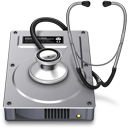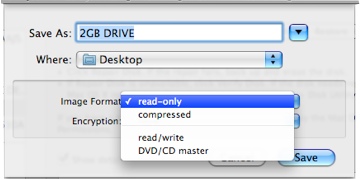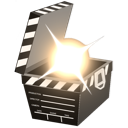Your best ally for corrupt card recovery: Disk Utility
When your memory card gets corrupt with tens or hundreds of megabytes of footage, video clips or movies, you have not one but two problems:
- Extract data from the magma that has now become your P2 card or your SDHC. (I told you not to buy the cheapest!)
- Organize this data into playable movies.
For the second problem, I have the solution: Treasured for diagnostic, then a Repair Kit that I develop for you.
But for the first one, until recently, I could just recommend to use a data recovery software. Stuff relatively expensive, and that would give average-to-good results only: Data Rescue 2, FileSalvage, Stellar Phoenix 3, Boomerang, UnDelete Plus, Recover4all, …
I also would have proposed to use photoRec, a free, open source utility, that seems to give the same average-to-good results as commercial products mentioned above. (But most people will not feel comfortable with its command line interface)
I even went as far as recording a rudimentary tutorial to help you use photoRec.

Until I discovered Disk Utility!
Disk Utility is a program that sits in your Utilities folder. It ships with every copy of Mac OS X.
And it’s not even a data recovery program.
This small program is capable of creating a disk image of your damaged card. It’s like copying the card, but instead of copying the files as the Finder would do (remember, it’s corrupt, it won’t help), Disk Utility copies the card, as is.
Imagine instead of a corrupt card, a damaged book with some missing index pages. The Finder would say it can’t copy anything because without index it doesn’t know where the chapters are.
Disk Utility would just photocopy the whole book, without asking questions.

Creating your Disk Image from the damaged drive…
This disk image, a .dmg file, contains all the recoverable media. Because it contains all what the card contains.
The beauty of the disk image is that we no longer have files, just raw data.
So if you use Treasured on the .dmg file, you can preview all the media. From all files as if they were just one.

Image Format: read-only
Compression: none (or it won’t work!)
Finally, the Repair Kit, working on the .dmg file, will restore in one shot all the media contained in the card: All the clips will be merged into one playable movie file.
Now let’s be a bit more technical:
Why does Disk Utility work better than data recovery products?
- First and foremost, because Treasured and Repair Kits work on raw media data, so the file structure is not helping (and their lack-of is not disturbing).
- And because data on cards is usually not very fragmented: Usage model is to fill the card (shoot until you can), then empty it, then fill again: Data layout is most likely linear on the card.
I discovered this by chance! Disk Utility was not on my radar, until a customer, Karen, told me she had done a disk image of the card, just in case.
Suddenly, a flash in my mind: Why not using the image on Treasured?
And it worked beautifully!
Thanks Karen.

